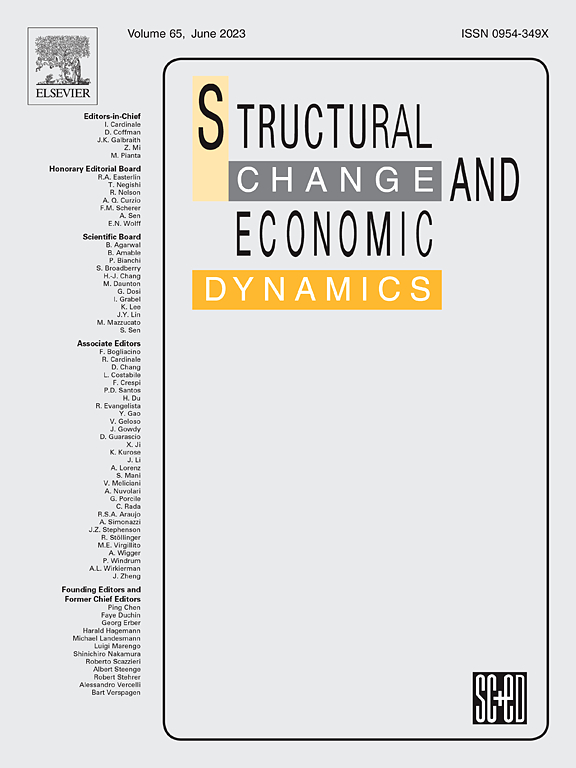Diverging paths: AI exposure and employment across European regions
IF 5
2区 经济学
Q1 ECONOMICS
引用次数: 0
Abstract
This study explores exposure to artificial intelligence (AI) technologies and employment patterns in Europe. First, we provide a thorough mapping of European regions focusing on the structural factors—such as sectoral specialisation, R&D capacity, productivity and workforce skills—that may shape diffusion as well as economic and employment effects of AI. To capture these differences, we conduct a cluster analysis which group EU regions in four distinct clusters: high-tech service and capital centres, advanced manufacturing core, southern and eastern periphery. We then discuss potential employment implications of AI in these regions, arguing that while regions with strong innovation systems may experience employment gains as AI complements existing capabilities and production systems, others are likely to face structural barriers that could eventually exacerbate regional disparities in the EU, with peripheral areas losing further ground.
求助全文
约1分钟内获得全文
求助全文
来源期刊

Structural Change and Economic Dynamics
ECONOMICS-
CiteScore
9.60
自引率
4.90%
发文量
159
期刊介绍:
Structural Change and Economic Dynamics publishes articles about theoretical, applied and methodological aspects of structural change in economic systems. The journal publishes work analysing dynamics and structural breaks in economic, technological, behavioural and institutional patterns.
 求助内容:
求助内容: 应助结果提醒方式:
应助结果提醒方式:


